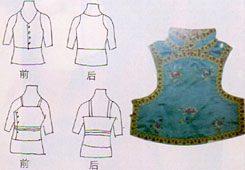Photo Stories
Secrets of Women's Underwear in Ancient China
(www.chinadaily.com.cn)
Updated: 2006-08-07 13:39
 |
Large Medium Small |
Delicate craftsmanship
Seemingly simple, traditional Chinese underwear is painstakingly difficult to make. The making involves dozens of techniques, including embroidery, sewing, pasting, patching, embellishing and rolling. The stitch should neither be too loose nor too tight. Also, creases and cracks were never permitted. The underwear was a considered a platform to exhibit the owner's delicate craftsmanship, which was a highly valued merit for women in ancient China.
Evolution of underwear in different dynasties
Just as outer garments, women's underwear was also heavily influenced by the social beliefs and humans' understanding towards beauty in different dynasties..
Before Han Dynasty, the underwear was called "Xieyi". "Xie" in Chinese means frivolity, suggesting people's evasive attitude towards underwear at that time.
During Han Dynasty, the "Baofu" and "Xinyi" were the most common underwear. "Baofu" was a piece of cloth with laces that could be fastened together to cover the belly. While "Xinyi" had a "Dang," a sleeveless jacket at the top of a "Baofu" so that the chest could also be covered. Both "Baofu" and "Xinyi" were single-pieced underwear that exposed one's back completely. Thin silk was the main material for the underwear in the Han Dynasty. Colorful threads were embroidered with the designs suggesting love.

"Liangdang"
"Liangdang" appeared in the Wei and Jin dynasties. It is believed that it was introduced into the central plains by nomads from northern China.